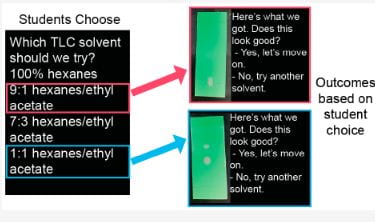Alejandra Castellanos, Department of Spanish and Portuguese
Tell me and I will forget; teach me and I will
remember; involve me and I will learn
Chinese proverb
At the end of a first week in intermediate Spanish, a student emailed me complaining that she wasn’t learning. My teaching style, using the flipped classroom, was certainly not helping her. To illustrate, this consisted of students studying grammar at home and practicing it in class in a series of communicative activities. In short, she asked me to explain the grammar in class and let them practice it in handouts, also during class.
Therefore, this article is an introduction to the educational strategy called flipped classroom. It is aimed at students who doubt or are not aware of their active and decisive participation in their own learning.
Flipped Classroom
In my practice as an instructor, grammar is studied individually by students outside the classroom. For instance, they read and study the textbook, complete online activities, and watch videos from the textbook and from YouTube. Meanwhile, classroom activities are devoted to fulfilling practical communicative tasks. For Arena Evseeva and Anton Solozhenko, a language class that uses the flipped classroom not only improves academic performance, it also increases motivation and interest for studying foreign languages.
Language Learning
If learning a language is being able to communicate in that language, and not memorizing grammar, learners should engage in communicative activities. In this sense, as James Lee and Bill VanPatten assert, the work of instructors is not to teach, but to create conditions in which learners can acquire language. That is why the flipped classroom is the best educational strategy to learn a language.
Regarding the learning of grammar, Klaus Brandl argues that in a student-centered approach, it is better if learners formulate their own hypothesis about rules. Learners process rules in a deeper level when they discover the patterns by themselves.
Flipping Class and Second Language Acquisition Example
After studying for the first time the present of the indicative at home, in class they practice, in pairs, the conjugation with different personal pronouns. The two learners match the following columns:
Tú, tu compañero (amigo) o ambos (You, your partner or both):
With this activity, learners deduce that the conjugation of the verbs is modified according to the person who executes the action. Following this activity, learners can create more sentences and share them in class.
Advantages
To emphasize, some advantages of this method include the (Kamo Chilingaryan and Ekaterina Zvereva):
- increase of learner autonomy and responsibility,
- possibility of each student of progressing at their pace
- possibility of catching up on a missed class
- increase of learner’s motivation
- improvement of classroom atmosphere
But most important is that when participating in foreign language communicative activities, students not only learn a language, they simultaneously learn how to be a competent member of the classroom. That is, they are involved effectively in a tacit process of socialization, an ability that is and will be useful in their personal and professional life.
Finally, it is important to bear in mind that sometimes, at the request of the students or when the instructor notices difficulties in carrying out the activity, it is necessary to explain some grammar in class. This will not take much time and the class can continue with more practice.
References
Klaus Brandl. Communicative Language Teaching in Action. Pearson (2008).
Lee, James F. and Bill Vanpatten. Making Communicative Language Teaching Happen. McGraw-Hill, 2003.
Matthew Mahavongtrakul edited this post on June 13th, 2019.

